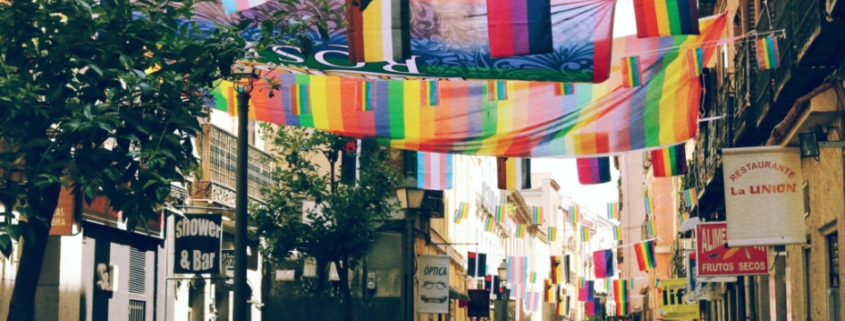International Day of Pride
Flags are typically utilized as a physical representation of pride for a community, country, state or organization. And throughout the month of June, you might see many flags with a rainbow design, representing an international community without physical borders: the lesbian, gay, bisexual, transgender, queer and extended (LGBTQ+) community.
Just like traditional flags, the pride flag is used to provide a sense of belonging, respect, and support toward the LGBTQ+ community. Since 1978 when the first rainbow-hued LGBTQ+ was created, pride flags have been a bright and colorful symbol of identity. Like the communities they represent, these flags are constantly evolving and expanding to represent the many gender identities, sexualities, and intersections better and more inclusively within these communities.
HISTORY OF THE FLAG:
The original pride flag was created in 1977 by Gilbert Baker, an artist, activist, and openly gay military veteran. Tasked by friend Harvey Milk, a historic figure in the fight for LGBTQ+ rights, to create a symbol for the queer community, Baker created a rainbow flag with eight different colors, as he saw flags as the most powerful symbol of pride. Inspired by the classic song “Over the Rainbow” from the 1939 film The Wizard of Oz, Baker created a rainbow flag to represent LGBTQ+ community. Inspired by rainbows which include all colors, Baker hoped the flag would be inclusive to all genders, races, and sexualities. Baker refused to trademark his flag design, giving the flag to the people within the LGBTQ+ community as their symbol of hope.
The six-color pride flag inspired by Baker’s original is one of the most commonly recognized and used LGBTQ+ flags. Like the symbolism found in country flags, the six colors in the flag hold specific meaning:
- Red equals life
- Orange symbolizes healing
- Yellow stands for sunlight
- Green represents nature
- Turquoise equals magic & art
- Violet represents the spirit of LGBTQ people
The most current version of the pride flag is the Progress Pride Flag. This flag, created with inspiration from previous pride flags, celebrates the diversity of the LGBTQ+ community. The colors black and brown were added to represent people of color, while the pink, baby blue, and white portion of the triangle represents the transgender community. The placement of the new colors in an arrow shape symbolizes the need to move forward with more inclusion of people of color and people outside of the gender binary within the LGBTQ+ community.
PRIDE ABROAD:
In 2021, Secretary of State Antony Blinken authorized U.S. diplomatic outposts around the world to fly the pride flag on the same flagpole as the U.S. flag at their embassy or consulate to show support for LGBTQ+ rights.
The authorization was not a requirement and chiefs of mission who run each embassy or consulate can choose whether to fly the pride flag or showcase other symbols showing support for LGBTQ+ rights based on what is “appropriate in light of local conditions.”
International Day of Pride is celebrated on June 28th each year in honor of the Stonewall protests and following demonstrations on June 28th, 1969. This day was marked as one of the first times in the history of that country in which the community of LGBTQ+ folk fought against the oppressive system, acting as a catalyst for the movement for the rights of their community in the United States and other countries as well. Following the Stonewall incident, the protestors of Greenwich Village created different activism groups to build safe spaces for the community.
Thanks to their efforts and the foundation of collective rights organizations, on June 28, 1970, the first pride marches took place in cities like New York and Los Angeles. From then on, other cities began to organize marches, protests and parades to honor this International Day of Pride.
By Madison Aldrich, Marketing Intern

